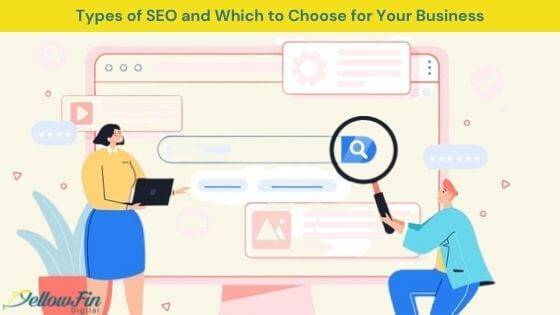Trying to increase your online presence but getting lost in the world of SEO jargon?
We’re here to break it down for you. Search Engine Optimization (SEO) is a lot simpler than you may think. It works like this: Search engines consider a bunch of factors to decide if your website is what a user is expecting. And then list them accordingly on the search engine results. This ‘bunch of factors’ is what SEO is all about.
In this blog, we will break down ways to improve the SEO-worthiness of your website, thereby increasing your revenue, too!
4 Do’s and Don’ts When Creating SEO Strategies
If you’re just starting out your business website and have no idea how SEO works, then we have a few simple strategies to help you get started with. We’ll also address the most common mistakes and how you can avoid them.
1. Align Your Web Content To Potential Clients’ Goals
Search engines look at website content and match it with search queries. So, page content should align with the type of queries that your ideal user has.
Don’t: Don’t focus on total traffic. Focus on the right traffic. There can be some keywords that would easily double or triple your traffic. But all of this traffic could come from people who aren’t interested in what you’re actually offering. Work smarter, not harder, and focus on keywords that will attract your target audience.
Do: Make a list of words and phrases your target audience might use to search for businesses like yours. Now you have focus keywords to build your content around.
2. Increase How Much Time A User Spends On Your Page
People rarely stay on a page for more than a few seconds when it doesn’t offer the information they’re looking for. Accordingly, Google tracks how much time users spend on a page using something called a SEMrush study. The graph below is an awesome representation of the kind of data Google collects and how it can be useful for your content strategy.
You can see that ‘time on site’, ‘page per session’ and ‘bounce rate’ are three main factors that decide the SEO ranking.
Don’t: While it’s essential to focus on making people stay, you shouldn’t resort to unethical ways to lock users from leaving the website. Don’t try to be tricky! Be upfront, be you.
Do: Focus on creating engaging content, images, and videos that engage your page visitor. Google reasons that if a user is spending enough time on a webpage, it’s because they found it useful. Focus on bringing valuable, unique content to the table, and the odds of prolonged, engaged web traffic that generates revenue goes up significantly.
3. Prioritize Content Quality
The only way you can add value to your visitors’ experience is through the quality of content, which is why Google puts so much value on it.
Don’t: Never use lazy content or copy content from other websites. This will ruin your SEO and may even lead to getting blacklisted by Google.
Do: Invest in the content you put on the website. Make sure that the content is easy-to-read, relatable, interactive, and loaded with useful information for your target audience. Keep the sentences short and break up long sections of written content with engaging and informative images and videos.
4. Find The Keywords To Match Your Unique Business
Your target audience must be using thousands and thousands of search terms to find your business. So then how can you choose the right keywords for it?
Don’t: Don’t spend a lot of time chasing after common keywords — chances are thousands of websites are using these same keywords, and it will be hard to stand out and rank.
Do: Focus on the keywords that have high chances of ranking and revenue. Sometimes, these are keywords that haven’t yet been scooped up by your competition and you can get a head start in the game!
Instead of relying on commonly used keywords, try using page-specific or product-specific keywords. They may have less traffic, but that traffic will be more targeted and will lead to higher revenue conversions that overused keywords.
How Can You Optimize Your Website for SEO?
Now that you have a solid understanding of SEO strategy, we’ll let you in on a few tips and tricks!
These are the same techniques that we use at YellowFin Digital when we’re building an SEO strategy for our clients. (To have one of our SEO experts analyze your site and see if we can help you improve your ranking and conversions, please reach out to us.)
First, we break our campaigns down into the three kinds of SEO: On-Page SEO, Off-Page SEO and Technical SEO. All of these play their own part in driving traffic to your website.
On-Page SEO Factors
On-Page SEO uses a combination of technical and content-based practices to increase search engine rankings and therefore, the traffic to your website.
Here are some of the best practices we follow for on-page SEO.
- Have a clear title tag and heading tags in the right format sprinkled with the keywords.
- Have a simple, descriptive URL structure devoid of numbers and repetitive words. It’s best if the URL contains the main keyword.
- Alt text provides information about your image and is used to describe what the image is for people who can’t see. The alt text should be specific with appropriate keywords and a vivid description of the image.
- Webpage loading speed should ideally be three seconds or less.
- Expand on the title tags with meta descriptions that offer a clear sense of what the entire webpage is about.
Off-Page SEO Factors
While the On-Page SEO deals with all the elements ‘on’ the page, Off-Page SEO deals with what you do outside of your website to increase its ranking. You essentially try to link your website from other top sites to increase its authority.
There are a few ways to do it.
- Internally link your web pages.
- Try to get natural links from influencers of your domain. A natural link is when someone adds your website’s link on their own.
- Work for self-created links in which you’ll add a link back from a directory, forum, press release, or blog. However, you should be cautious about making sure that it doesn’t fall into the black hat SEO practices that could backfire.
- Guest blog on authoritative sites and get a natural link back to your website. Keep in mind that a high-quality link back is worth more than 20 poor-quality linkbacks.
- Create infographics that have a high probability of getting shared by many websites.
Technical SEO
Technical SEO deals with the back-end structure of your website, where the search engines crawl to find out about each web page. The coding structure should be uncluttered with all the different elements of the webpage completely responsive.
So, that’s a basic rundown on SEO. We can’t stress enough that you check for On-Page SEO elements regularly and improve the Off-Page SEO through link building.
Key Takeaways
There are definitely correct and not-so-correct ways to increase conversions through SEO.
- Understand how your users think and then craft your strategy accordingly.
- Create relevant, high-quality content with targeted keywords that your ideal users will search for.
- Include less-popular, specific keywords to get ahead of the competition.
- Optimize for on-page SEO elements on every single webpage.
- Increase the number of backlinks from high authority websites naturally.
So there you have it! SEO best practices to help you optimize your site’s content and improve your traffic and revenue. Now, get optimizing!





